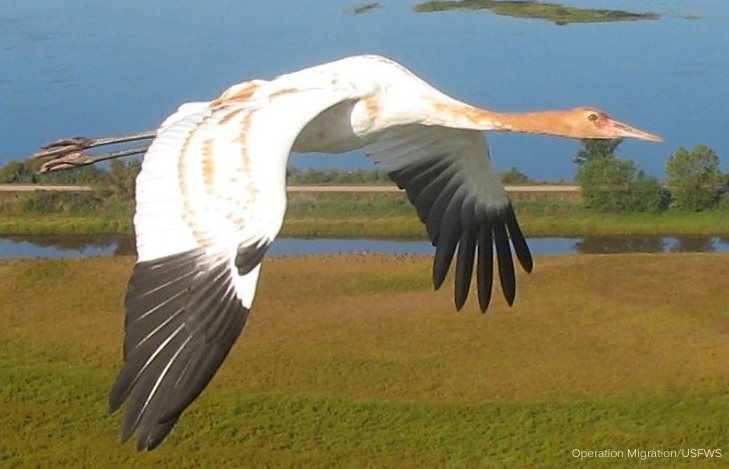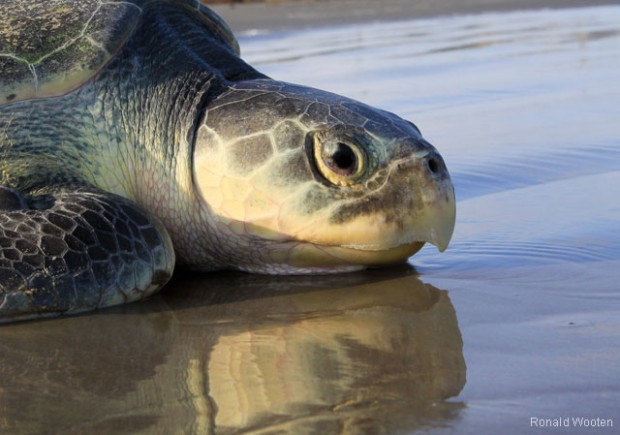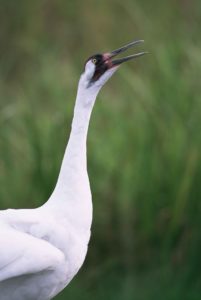We have much more to do and your continued support is needed now more than ever.
A Win for the Whooping Crane’s Texas Home

The Texas coast is also the winter home of the last wild flock of whooping cranes. These majestic birds winter in and around the Aransas National Wildlife Refuge on San Antonio Bay, where they feed mostly on blue crabs. The whooping crane’s continued recovery largely depends on Aransas Bay continuing to support robust populations of blue crabs. Unfortunately, Texas’ intense drought of 2011-2013 resulted in little fresh water making it to the bay, which was hard on blue crab populations.
Whooping cranes aren’t the only species that eat blue crabs. The highly endangered Kemp’s ridley sea turtle and many other fish and birds also favor the blue crab, as well as shrimp or oysters — all of which need the brackish water found in estuaries to thrive. Without healthy estuaries, these important links in the Gulf’s food web would be affected.

The National Wildlife Federation’s South Central Office, through its Texas Living Waters program, has been working for more than a decade to make sure that Texas estuaries get the water they need. Recently, these efforts have seen an important breakthrough. The RESTORE Council — a federal-state body charged with managing billions of dollars in penalties that will come to the Gulf states because of the 2010 Deepwater Horizon oil spill — recently released a draft of its updated Comprehensive Plan for Gulf-wide restoration. An important addition to this latest version of the Plan was an explicit recognition that water quantity is a restoration goal.
This latest draft includes this language:
Restoring water quality and habitat can at times require efforts to address water quantity issues. For example, restoring freshwater inflows to bays and estuaries is essential for restoring coastal waters and habitats by re-establishing natural salinity levels and sediment regimes.

This addition means that oil-spill penalties could be used to address freshwater inflow needs of places like San Antonio Bay, as well as other estuaries along the Gulf coast. The lion’s share of the penalty funds from the Deepwater Horizon disaster will soon be headed to all five Gulf states. Texas will see a substantial sum of money for environmental restoration — roughly $1 billion or perhaps more.
The National Wildlife Federation’s Gulf Restoration Program is working to ensure that this money is used on projects to restore the health of the Gulf for all wildlife. In Texas, no project would bring a bigger bang for the buck than ensuring that the state’s major estuaries — places like San Antonio Bay — are ensured at least some amount of fresh water, even during another possible record-breaking drought.
The inclusion of water quantity as a restoration need in this new Comprehensive Plan is still just an interim step. We now need the RESTORE Council and/or the State of Texas to actually commit the oil-spill penalty money to projects that ensure that wildlife like blue crabs — and therefore whooping cranes — get the fresh water they need to make it through dry years.
Take ActionThank the Council for the strong update to the Gulf-wide Comprehensive Plan – and ask them to consider a few additional tweaks to make it even better.





















